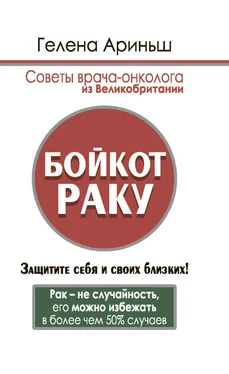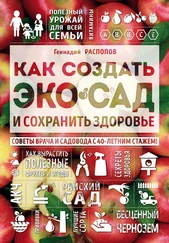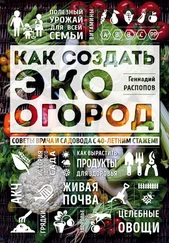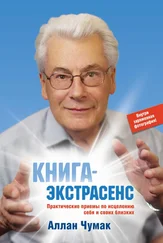165. Moonen H, Engels L, Kleinjans J, Kok T. The CYP1A2-164A->C polymorphism (CYP1A2*1F) is associated with the risk for colorectal adenomas in humans. Cancer Letters 2005; 229(1): 25–31.
166. Butler LM, Duguay Y, Millikan RC, et al. Joint effects between UDP-glucuronosyltransferase 1A7 genotype and dietary carcinogen exposure on risk of colon cancer. Cancer Epidemiology, Biomarkers and Prevention 2005; 14(7): 1626–1632.
167. Knize MG, Felton JS. Formation and human risk of carcinogenic heterocyclic amines formed from natural precursors in meat. Nutrition Reviews 2005; 63(5): 158–165.
168. Woo HD 1, Park S, Oh K, Kim HJ, Shin HR, Moon HK, Kim J. Diet and Cancer Risk in the Korean Population: A Meta– analysis. Asian Pac J Cancer Prev. 2014; 15(19):8509–19.
169. Sliva D, Jedinak A, Kawasaki J, Harvey K, Slivova V. Phellinus linteus suppresses growth, angiogenesis and invasive behaviour of breast cancer cells through the inhibition of AKT signalling. Br J Cancer 2008; 98: 1348–1356.
170. Suarez-Arroyo IJ, Rosario-Acevedo R, Aguilar-Perez A, Clemente PL, Cubano LA, et al. Anti-tumor effects ofGanoderma lucidum (Reishi ) in inflammatory breast cancer inin vivo andin vitr o models.Plos one 2013; 8: e57431.
171. Novaes MRCG, Valadares F, Reis MC, Gonçalves DR, Menezes MdC. The effects of dietary supplementation withAgaricales mushrooms and other medicinal fungi on breast cancer: evidence-based medicine. Clinics 2011; 66: 2133–2139.
172. Eliza WL, Fai CK, Chung LP. Efficacy ofYun Zhi (Coriolus versicolor ) on survival in cancer patients: systematic review and meta-analysis . Recent Pat Inflamm Allergy Drug Discov 2012; 6: 78–87.
173. Bao PP, Lu W, Cui Y, Zheng Y, Gu K, et al. Ginseng andGanoderma lucidum use after breast cancer diagnosis and quality of life: a report from the Shanghai Breast Cancer Survival Study.Plos one 2012; 7: e39343.
174. Jeong SC, Koyyalamudi SR, Jeong YT, Song CH, Pang G. Macrophage immunomodulating and antitumor activities of polysaccharides isolated fromAgaricus bisporus white button mushrooms. J Med Food 2012; 15: 58–65.
175. Shi X, Zhao Y, Jiao Y, Shi T, Yang X. ROS-dependent mitochondria molecular mechanisms underlying antitumor activity ofPleurotus abalonus acidic polysaccharides in human breast cancer MCF-7 cells. Plos one 2013; 8: e64266.
176. Sarangi I, Ghosh D, Bhutia SK, Mallick SK, Maiti TK. Anti-tumor and immunomodulating effects ofPleurotus ostreatus mycelia-derived proteoglycans. Int Immunopharmacol 2006; 6: 1287–1297.
177. Zhou L-B, Chen B. Bioactivities of water-soluble polysaccharides fromJisongrong mushroom : anti-breast carcinoma cell and antioxidant potential. Int J Biol Macromol 2011; 48: 1–4.
178. Li J, Zou L, Chen W, Zhu B, Shen N, Ke J, Lou J, Song R, Zhong R, Miao X. Dietary mushroom intake may reduce the risk of breast cancer: evidence from a meta-analysis of observational studies. PLoS One. 2014 Apr 1; 9(4): e93437.
179. Schwartz B, Hadar Y. Possible mechanisms of action of mushroom-derived glucans on inflammatory bowel disease and associated cancer. Ann Transl Med 2014 Feb; 2(2): 19.
180. Park HJ. CARI III inhibits tumor growth in a melanoma-bearing mouse model through induction of G0/G1 cell cycle arrest. Molecules. 2014 Sep 12; 19(9): 14383–95.
181. Nazıroğlu M, Yıldız K, Tamtürk B, et al. Selenium and psoriasis. Biological Trace Element Research . 2012; 150: 13–39.
182. Nazıroğlu M . Role of selenium on calcium signaling and oxidative stress-induced molecular pathways in epilepsy. Neurochemical Research . 2009; 34(12): 2181–2191.
183. Nilsonne G, Sun X, Nyström C, et al. Selenite induces apoptosis in sarcomatoid malignant mesothelioma cells through oxidative stress. Free Radical Biology and Medicine . 2006; 41(6): 874–885.
184. Bayoummy KE. Cancer Principles and Practice of Oncology. Philadelphia, Pa, USA: JB Lippincott; 1991. (V. de Vita, S. Hellman, and S. A. Rosenberg, Eds.).
185. Nazıroğlu M, Karaoğlu A, Aksoy AO. Selenium and high dose vitamin E administration protects cisplatin-induced oxidative damage to renal, liver and lens tissues in rats. Toxicology . 2004;195(2–3): 221–230.
186. Zhu Z, Kimura M, Itokawa Y, Nakatsu S, Oda Y, Kikuchi H. Effect of selenium on malignant tumor cells of brain. Biological Trace Element Research . 1995; 49(1): 1–7.
187. Zhang J, Wang X, Xu TT. Elemental selenium at nano size (Nano-Se) as a potential chemopreventive agent with reduced risk of selenium toxicity: comparison with se-methylselenocysteine in mice.Toxicological Sciences. 2008; 101(1): 22–31.
188. Ji J, Liu J, Liu H, Wang Y. Effects of Fermented Mushroom of Cordyceps sinensis, Rich in Selenium, on Uterine Cervix Cancer. Evid Based Complement Alternat Med. 2014; 2014:173180.
189. Lee AH, Pasalich M, Su D, Tang L, Tran VD, Binns CW Mushroom intake and risk of epithelial ovarian cancer in southern Chinese women. Int J Gynecol Cancer. 2013 Oct; 23(8): 1400–5.
190. Prasad S, Tyagi AK, Aggarwal BB. Recent developments in delivery, bioavailability, absorption and metabolism of curcumin: the golden pigment from golden spice. Cancer Res Treat . 2014; 46: 2–18.
191. Shureiqi I, Baron JA . Curcumin chemoprevention: the long road to clinical translation. Cancer Prev Res (Phila). 2011; 4: 296–298.
192. Kunnumakkara AB, Anand P, Aggarwal BB . Curcumin inhibits proliferation, invasion, angiogenesis and metastasis of different cancers through interaction with multiple cell signaling proteins. Cancer Lett . 2008; 269: 199–225.
193. Anand P, Sundaram C, Jhurani S, Kunnumakkara AB, Aggarwal BB. Curcumin and cancer: an “old-age” disease with an “age-old” solution. Cancer Lett . 2008; 267: 133–164.
194. Bar-Sela G, Epelbaum R, Schaffer M . Curcumin as an anti-cancer agent: review of the gap between basic and clinical applications. Curr Med Chem. 2010; 17: 190–197.
195. Lewinska A, Adamczyk J, Pajak J, Stoklosa S, Kubis B, Pastuszek P, Slota E, Wnuk M. Curcumin-mediated decrease in the expression of nucleolar organizer regions in cervical cancer (HeLa) cells. Mutat Res Genet Toxicol Environ Mutagen. 2014 Sep 1; 771: 43–52.
196. Lv ZD, Liu XP, Zhao WJ, Dong Q, Li FN, Wang HB, Kong B. Curcumin induces apoptosis in breast cancer cells and inhibits tumor growth in vitro and in vivo. Int J Clin Exp Pathol. 2014 May 15; 7(6): 2818–24.
197. Jiang AJ 1, Jiang G, Li LT, Zheng JN. Curcumin induces apoptosis through mitochondrial pathway and caspases activation in human melanoma cells. Mol Biol Rep. 2014 Sep 28. [Epub ahead of print].
198. Ma J, Fang B, Zeng F, Pang H, Zhang J, Shi Y, Wu X, Cheng L, Ma C, Xia J, Wang Z. Curcumin inhibits cell growth and invasion through up-regulation of miR-7 in pancreatic cancer cells. Toxicol Lett. 2014 Sep 23; 231(1): 82–91.
199. Wang K, Fan H, Chen Q, Ma G, Zhu M, Zhang X, Zhang Y, Yu J. Curcumin inhibits aerobic glycolysis and induces mitochondrial-mediated apoptosis through hexokinase II in human colorectal cancer cells in vitro. Anticancer Drugs. 2014 Sep 16. [Epub ahead of print].
Читать дальше
Конец ознакомительного отрывка
Купить книгу












